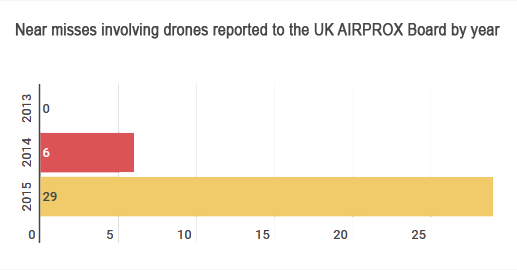Drones: what are the risks to aircraft and what can be done to reduce them?
After a drone caused chaos at Gatwick airport, Simon Calder looks at what the problems are

Your support helps us to tell the story
From reproductive rights to climate change to Big Tech, The Independent is on the ground when the story is developing. Whether it's investigating the financials of Elon Musk's pro-Trump PAC or producing our latest documentary, 'The A Word', which shines a light on the American women fighting for reproductive rights, we know how important it is to parse out the facts from the messaging.
At such a critical moment in US history, we need reporters on the ground. Your donation allows us to keep sending journalists to speak to both sides of the story.
The Independent is trusted by Americans across the entire political spectrum. And unlike many other quality news outlets, we choose not to lock Americans out of our reporting and analysis with paywalls. We believe quality journalism should be available to everyone, paid for by those who can afford it.
Your support makes all the difference.Five flights were diverted and thousands of passengers had their journeys disrupted after a drone was spotted flying close to the runway at Gatwick. Concern is growing that remotely-piloted aircraft (RPA), as drones are known, could cause "a catastrophic crash” in the words of the British Airline Pilots' Association (BALPA).
What are the pilots’ and airlines’ concerns? How big are the safety risks? And what can be done?
Why are pilots worried about drones?
If an aircraft wing struck a drone, it would probably cause damage but no danger to the plane. But a drone being ingested by an engine could be much riskier. While bird strikes are relatively frequent, and passenger aircraft are perfectly capable of flying with one engine out of action, there are concerns that a metallic object containing lithium batteries could cause an uncontained failure, with debris impacting on the airframe. Pilots are also worried about a drone striking an aircraft windscreen, or a helicopter rotor.
“We need more information on just how big a threat they are,” BALPA says. It is involved in tests “to identify what would happen if a drone was to strike an aircraft engine, windscreen or the rotor blades of a helicopter”.
There is also concern that drones fitted with explosives could be used for acts of terrorism, targeting aircraft in flight or, more likely, planes on the ground.
What do the airlines say?
Airlines take the safety risks very seriously. Their global association, IATA, warns of "an exponential increase in reports of RPA operating dangerously close to manned aircraft and airports."
They are also aware of the financial impact of disruption caused by drones flying close to airports: the diversions and delays at Gatwick cost tens of thousands of pounds.
Is it really a problem?
Analysing data from the Airprox Board, which monitors potentially dangerous encounters, the risks are rising swiftly. In 2013 there were none; in 2014, five; in 2015, 29.
In the first four months of this year, pilots filed 22 reports of near misses.

Five of these were of the highest category, A, which means “aircraft proximity in which serious risk of collision has existed”. It appears that some drone users deliberately target busy airports, in a bid to get dramatic images of aircraft.
BALPA says: “While we take no issue with people who fly their drones in a safe and sensible manner, some people who fly them near airports or densely populated areas are behaving dangerously.
“The threat of drones being flown near manned-aircraft must be addressed before we see a disaster.”
What does the law say?
The Air Navigation Order 2009 says: “The person in charge of a small unmanned aircraft must maintain direct, unaided visual contact with the aircraft sufficient to monitor its flight path in relation to other aircraft, persons, vehicles, vessels and structures for the purpose of avoiding collisions.”
In other words, users must always keep the drone in sight. In addition, unauthorised drones are supposed to be kept well clear of airports.
What can be done to reduce the threat?
The three issues are how to deter people from flying drones near aircraft; how better to identify them so that avoidance action can be taken; and steps to limit the chances of intrusion into active airspace.
Deterrence is being tackled by education, such as the Civil Aviation Authority’s Drone Code, which urges “Stay well away from aircraft, airports and airfields”. Drones must be kept below 400 feet.
BALPA Is calling for “more high profile prosecutions of offenders” as well as compulsory registration of drone owners, with the rules made quite clear.
Identification and avoidance is mainly being tackled by the private sector, with the possibility of Government action. Drones could be fitted with transponders, which transmit data that would allow air-traffic controllers and pilots avoid conflicts. The police could also use the information to trace offenders.
There are also calls for geo-fencing around sensitive sites: an electronic “barrier” which suitably equipped drones are unable to penetrate. However, both transponders and GPS systems used in conjunction with geo-fencing could be disabled.
Could terrorists use drones to attack aircraft?
Security experts are worried about the prospect of an attack by a drone fitted with explosives. Terrorists are thought more likely to target aircraft on the ground rather than in flight.
Join our commenting forum
Join thought-provoking conversations, follow other Independent readers and see their replies
Comments